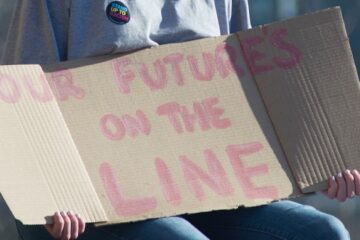Earlier this month, International Day of the Girl was celebrated across the world. The day is commemorated annually on October 11 to recognize girls’ rights and the unique challenges girls face around the world.
Globally, civil society leaders, governments, organizations, and changemakers who are working towards and advocating for gender equity hosted events and shared messaging around the work they are doing to bridge the gender divide.
At AMAZE, we released a video about female genital mutilation/cutting (FGM/C) in partnership with UNFPA ESA and in collaboration with the Orchid Project and the International Planned Parenthood Federation. Traditional practices like FGM/C can have short-term and long-term harmful consequences on girls and women like excessive bleeding, trauma, and complications during childbirth.
AMAZE is a collaboration between Advocates For Youth (my host organization), Answer, and YTH that creates an engaging, accurate, age-appropriate online sex education resource for youth by making creative, edgy YouTube videos about health and sex-ed topics that matter to youth.
While online resources mean that it is more accessible to more girls across the world, and with the pandemic accelerating digital learning, it is important to highlight girls’ diverse digital realities. This year’s International Day of the Girl theme, ‘Digital Generation. Our Generation’, acknowledges that the gender digital divide in connectivity, devices, and use, skills, and jobs is real.
According to UNICEF, 2.2 billion people below the age of 25 do not have access to internet at home, with girls more likely to be cut off. This essentially means that there are children who have not participated in any kind of formal education for almost 2 years.
Other factors like the cost of education and technology, traditional gender roles, among others can contribute to girls’ low or lack of access to education and technology. Unfortunately, this means that girls are left behind and are unable to capitalize on the opportunities that their male peers have access to/can enjoy.
On October 7, I had the honor of attending a lobby day for the Girls LEAD Act, which is a bipartisan bill that complements Congress’ recent efforts on women’s empowerment. The bill combats the underrepresentation of women at all levels of public sector decision-making by specifically addressing the civic and political involvement and leadership of adolescent girls, an area where there is currently a gap in U.S. foreign assistance policy and programming.
According to the World Economic Forum 2021 Global Gender Gap Report, it will take 145.5 years to achieve gender parity in political participation. This is a reality that should concern everyone because women’s and girls’ empowerment are closely linked to inclusive democracies, sustainable development, and global stability. Since women are less likely to engage in political processes if they are excluded from childhood, it is imperative that we support and advocate for girls’ participation in politics because this kicks off a ripple effect of having gender balance in the political sphere, promoting gender balance in the workforce which could double the global GDP by 2025, catalyzing economic development and contributing to better collective decision-making.
Needless to say, ensuring that every girl, everywhere, has full rights will transform communities across the world, and we shall all be better for it.
May we live to see it happen in our time!



